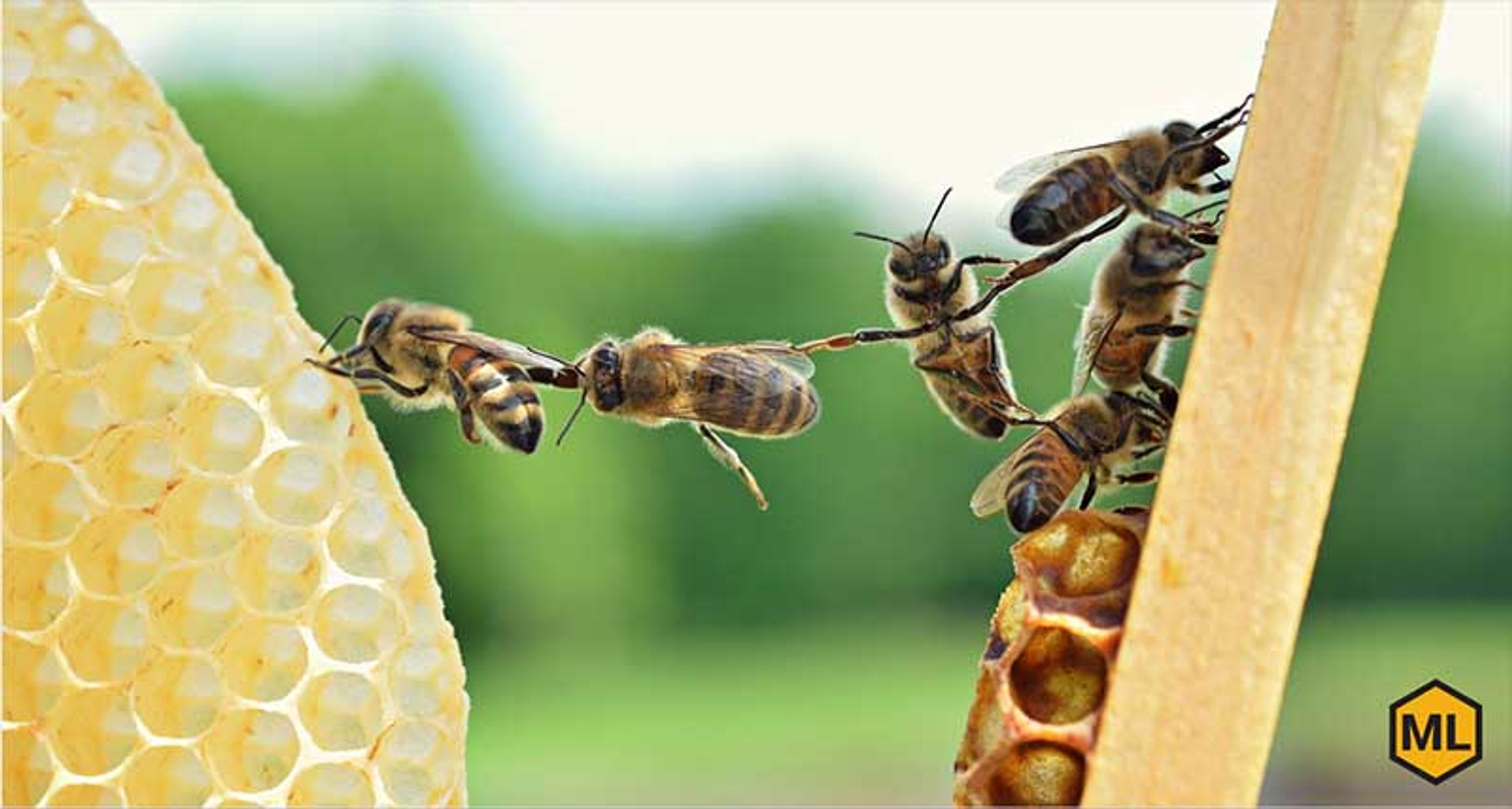How Do Honey Bees Communicate?
If you know anything about honey bees, you know they’re all about their colonies. Every member of a hive—from the youngest worker bees to the queen herself—works to keep the colony healthy, productive, and thriving.
Honey bees are excellent team players, which means they need to be great at communication—and they are! Bees use smell and movement to share information about food sources, hive productivity, and more. If you’ve ever wondered how honey bees communicate with each other, you’re in the right place.
Learn more about their unique use of pheromones and movement with this guide.
COMMUNICATION THROUGH SMELL
Honey bees produce various odor cues called pheromones to communicate with one another. Each type of pheromone has a different purpose and conveys a different message. For example, worker bees release a pheromone when they use their stinger.
This odor acts as an alarm for any other nearby bees, alerting them to the presence of a threat. This is why beekeepers use smokers when they work around their hives: the smoke covers the scent of any alarm pheromones, preventing the entire colony from getting agitated.
The queen also produces vital pheromones for the hive. Her odor dissuades other females in the hive from mating with drones. It also lets the rest of the colony know that she’s alive and well. The presence of a queen—and her scent—keeps the other members of the hive productive. When her scent disappears, that’s a signal for the worker bees to start raising a new queen bee to take over.
COMMUNICATION THROUGH DANCE
The other major part of how honey bees communicate with each other is movement—more specifically, dance. Worker bees use a series of movements known as the waggle dance to help each other find nearby food sources, water, and other points of interest.
Whenever a bee comes back from a successful foraging trip, they’ll dance for the others so that everyone can find this vital resource. During this waggle dance, the honey bee will move in circles or a figure-eight pattern, vibrate its wings, and angle its body in relation to the sun. This information communicates in which direction a food source is located as well as how far it is from the hive.
These methods of communication are just one example of the incredible and intriguing behaviors of honey bees. Are you interested in learning more? Mann Lake is full of resources for the curious beekeeper. Check out our guidebooks, hive supplies, and bee boxes for sale—everything you need for a successful beekeeping career.

